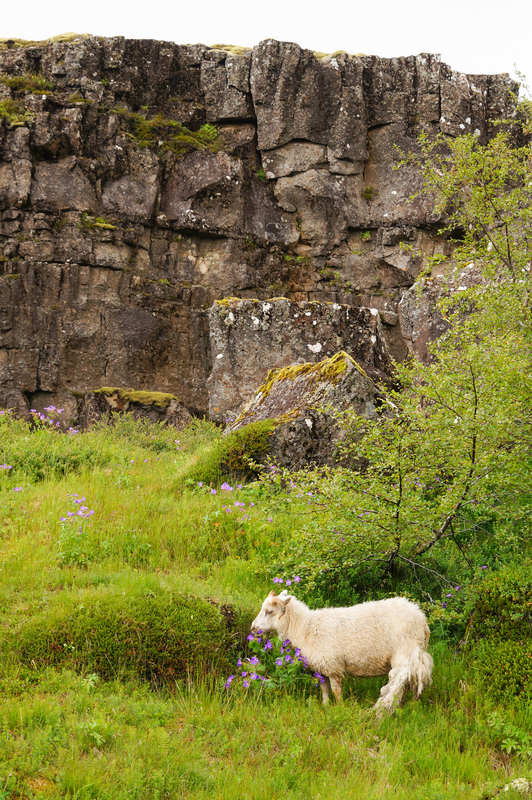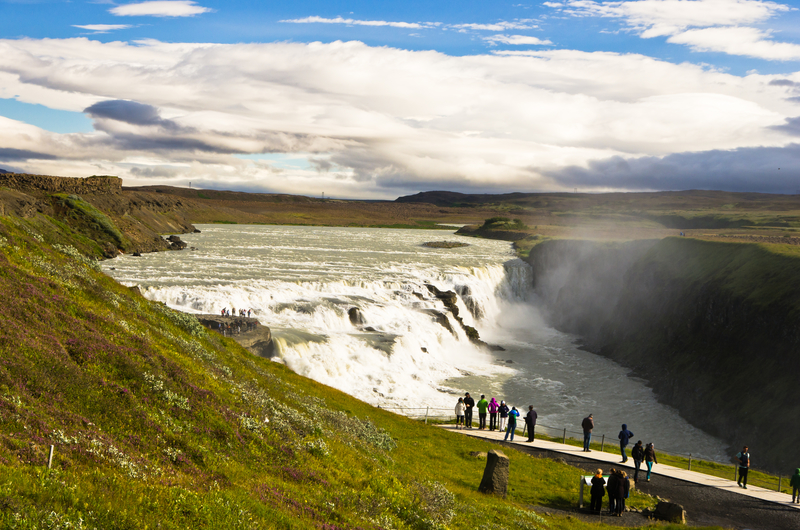By Richard Newtown
If only geology lessons were always like this. After driving 25 miles east of Reykjavík, capital of Iceland, we change into dry suits and flippers. Like fish out of water, we slap our way awkwardly along a path and then down a flight of metal steps. We pull on our facemasks, bite onto the mouthpieces of our snorkels and take the plunge into the narrow, deep fissure that divides Europe from North America.

© Pulpitis | Dreamstime.com
Iceland is the ultimate classroom. Who knew geology could be so much fun? Snorkeling along the Silfra Fissure in Thingvellir National Park is just one of the experiences in this remarkable country that will forever transform children’s (and parents’) understanding of our planet.
A 40-minute guided snorkeling tour, costing $150 per person with all equipment provided, adds an incredible dimension to learning. The minimum age is 14 (there are also height and weight minimums), and all participants must be able swimmers.
The dry suit keeps you warm in the frigid water, though you can still feel the numbing cold on the exposed flesh of your face. Minor discomforts are a small price to pay for the magical sensation of floating in astonishingly clear glacial water above a chasm that descends 65 feet.
You don’t have to get wet to experience the continental divide. For long stretches the fissure is dry, and you can walk along it. With rugged cliffs rising on both sides, you are actually within the gap between the European and North American tectonic plates.
You can get a sense of the awesome natural forces shaping Iceland even within your hotel bathroom. When you turn on the hot water faucet, there’s an unmistakable whiff of rotten eggs. The sulfurous water comes directly from geothermal springs up to 6,000 feet underground.
(Never put your hand under a running hot faucet in Iceland — it’s often at scalding temperature.)
This island nation learned to harness the vast quantities of raw energy bubbling beneath its rugged surface. All of the country’s power needs are obtained from renewable sources.
Geothermal water heats the houses, while hydropower and steam turbines provide electricity.
The waste water from the Svartsengi geothermal power station, 27 miles from Reykjavík, has become the country’s top tourist attraction, the famous Blue Lagoon. Take your swimming things and some conditioner to restore your hair in the shower afterward, and prepare for one of the most memorable experiences of your life.
Although it is open year-round, the Blue Lagoon is particularly impressive in winter.
Brace yourself for the short walk from the changing rooms to the water’s edge, then savor the relief as you immerse yourself in bath-hot spring water. The white silica sludge on the bottom of the lagoon is said to have healing properties, and many bathers scoop it up and cover themselves with it. Children under 8 are required to wear provided, inflatable armbands.

© Banepetkovic | Dreamstime.com
Perhaps the most spectacular manifestation of Iceland’s geothermal activity is found close to the Hvita River, a 90-minute drive east of Reykjavík. Here, threaded through with footpaths, lies a complex of natural bubbling pools of mud, fumaroles and geysers. The most dependable geyser is Strokkur, which erupts every 6–10 minutes, sending a plume of boiling water up to 130 feet in the air. The nearby Great Geysir is much less predictable, erupting to more than 200 feet two or three times a day. As with the Blue Lagoon, the sensations are enhanced in winter, when clouds of steam magnify each eruption in the freezing air.
As you’d expect in such a rugged landscape, Iceland has an abundance of waterfalls. The greatest of them all, Gullfoss, is easily combined with a visit to the geysers. In winter the 100-foot waterfall is often partially frozen, which makes for haunting photography. But this is one attraction best experienced in summer, in full flow, when the falling water is thunderous, throwing up clouds of spray.
Summer also provides the best time to go whale-watching, departing on one of the regular tours out of Reykjavík’s old harbor. The viewing success rate is 90 percent in the warm months, with free repeat tour vouchers given if no whales are seen. Common species include humpback and minke whales and white-beaked dolphins. The average whale-watching voyage lasts around three hours.
Of all the island’s natural wonders, the most dominant are its many active volcanoes. They cast a shadow over life here. When a major eruption occurs, day can become night, lava flows threaten roads and communities and international flights are disrupted. There is no timetable; eruptions can occur at any time, though usually volcanologists can provide a few days’ warning.
The legacy of all this volcanic activity is Iceland itself. Violent eruptions made — and continue to alter — the island’s incredible landscape. For the ultimate Icelandic geological experience, what’s better than to go inside a volcano’s magma chamber?
This rare privilege is possible in the dormant Thrihnukagigur volcano, 30 minutes south of Reykjavík. The age minimum is 12, and a good head for heights is essential. In the course of the tour, visitors are lowered 400 feet by open elevator into the volcano’s crater; the careful descent takes six minutes. At the bottom, you gain a firsthand impression of the sheer size of the magma chamber and a vivid impression of the forces that drive a volcanic eruption
Read This Next
The Creepy Appeal of Dark Tourism
Destinations
Apr 25, 2024#WhereverFamily
Insta FeedParents
Apr 22, 20244 Gift Ideas for Mother’s Day
Mother’s Day fast approaches, and all mothers and mother figures deserve something extra special this year. Treat the mom in your life, whether she’s an outdoor enthusiast or host extraordinaire, to these four great gifts.
Sponsored Content
Travel Tips to Help Protect Your Health and Your Trip
Five Tips to Help Minimize Potential Travel Problems
Multigenerational
Apr 19, 2024Family-Friendly Offerings from Hyatt’s Inclusive Collection
Hyatt’s Inclusive Collection includes the largest portfolio of luxury all-inclusive resorts in the world — many of them perfect for family travelers. And two current offers might entice your family even more.
North America
Apr 17, 2024A New, Family-Friendly Hotel Opens on Orlando’s Universal Boulevard
Family travelers to Orlando have a new option for family- and pet-friendly accommodations thanks to the recent opening of Hotel Landy, a Tribute Portfolio Hotel. Located on Universal Boulevard and minutes from theme parks, the convention center and the airport, Hotel Landy takes over the former Hotel Kinetic, joining Marriott’s Tribute Portfolio collection.
Sponsored Content
Unearth Seoul’s Hidden Gems
Filled with hidden treasures waiting to be discovered, Seoul invites travelers to unearth its many gems, and Seoul Tourism Organization is here to help travelers do just that. Through thoughtfully created initiatives like the Theme Tourism County Competition, Seoul Tourism Organization works closely with local districts to identify and showcase what makes each district unique and charming in all seasons.
Multigenerational
Apr 15, 2024Enjoy Multigenerational Travel in New York with Motto by Hilton
Family Travel Agent recently found family travel will continue to grow this year, as 81 percent of families expressed their likelihood of traveling in 2024. Of that group, more than 50 percent plan to take part in multigenerational travel. If that multigen travel is taking place in New York City, two hotels, Motto Times Square and Motto Chelsea, prove ideal options.

ShareThis